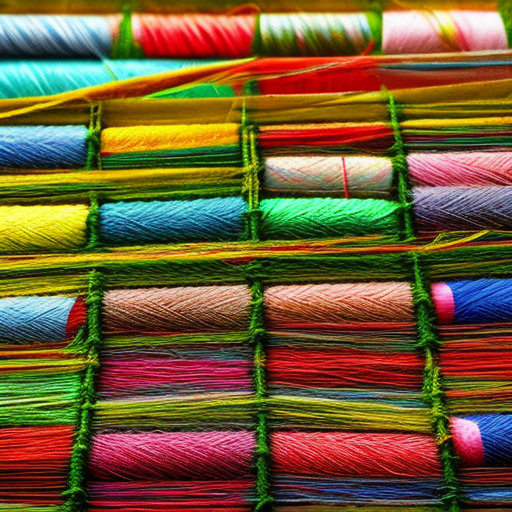
When it comes to sewing, the sewing thread is an essential component that holds everything together, quite literally. Thread, in all its different forms and materials, has been an integral part of sewing for centuries. Its significance cannot be understated, as it plays a crucial role in ensuring the durability and overall finish of any garment or textile project.
The Importance of Sewing Thread
Thread is a thin, flexible strand of material used to sew various pieces of fabric together. It acts as a binder, holding the fabric layers firmly in place to create a cohesive and functional final product. Sewing threads come in different sizes, thicknesses, and materials, each serving a distinct purpose based on the intended use of the final product.
Strong and reliable sewing thread is essential to withstand the stress and strains induced by regular use and wear. A well-chosen thread can contribute to the longevity of the sewn item. Therefore, paying attention to thread quality and characteristics is paramount for creating durable and long-lasting garments, accessories, and home textiles.
Types of Threads
Several types of sewing threads are commonly used, categorized based on the material they are made from:
Cotton Thread:
Cotton thread is known for its versatility and is suitable for a wide range of sewing projects. It is typically made from natural cotton fibers and is available in various weights. Cotton thread offers good strength, durability, and stability, making it ideal for most general sewing applications.
Polyester Thread:
Polyester thread is a synthetic thread made from polyester fibers. It is highly durable, strong, and resistant to abrasion, chemicals, and sunlight. Polyester thread is commonly used for sewing garments, home textiles, and outdoor products due to its excellent colorfastness and resistance to shrinking.
Nylon Thread:
Nylon thread is another popular choice known for its strength, elasticity, and resistance to mildew and rot. It is often used for sewing upholstery, leather goods, shoes, and other heavy-duty applications.
Silk Thread:
Silk thread is a luxurious option known for its lustrous appearance and smooth texture. It is popular for delicate projects like embroidery, heirloom sewing, and high-end fabrics.
Specialized Threads:
In addition to the aforementioned threads, there are specialized types designed for specific purposes. Metallic threads add a decorative touch with their metallic sheen, while invisible threads blend seamlessly into fabrics, making stitches less noticeable. There are also threads designed for quilting, serging, and embroidery, each catering to the specific needs of those sewing techniques.
Considerations for Choosing Thread
When selecting the appropriate thread for a sewing project, several factors should be considered:
- Final use and application of the sewn item
- Fabric type and weight
- Desired aesthetics and decorative elements
- Manufacturing techniques (hand sewing, machine sewing, embroidery, etc.)
Matching the thread material, weight, and color to the project requirements ensures optimal results and enhances the overall quality of the finished product.
In Conclusion
Sewing thread is an integral part of any sewing project, holding the fabric pieces together and ensuring a long-lasting, durable outcome. Choosing the right thread for each project’s unique requirements is crucial, as it affects the overall strength, appearance, and functionality of the final product. Whether it’s cotton, polyester, nylon, silk, or specialized threads, understanding their characteristics and suitability for different applications is essential for any sewing enthusiast or professional.





Love how this article explains the different stitching thread types! Great article. I never knew there was such a variety!
A great sewsation! Sewing Thread Meaning is an incredibly helpful and informative read for those of us who want to understand thread better and find the best one for our next sewing project.
This is so helpful! Thread can be so confusing to choose from, and this article helped me make sense of it all.